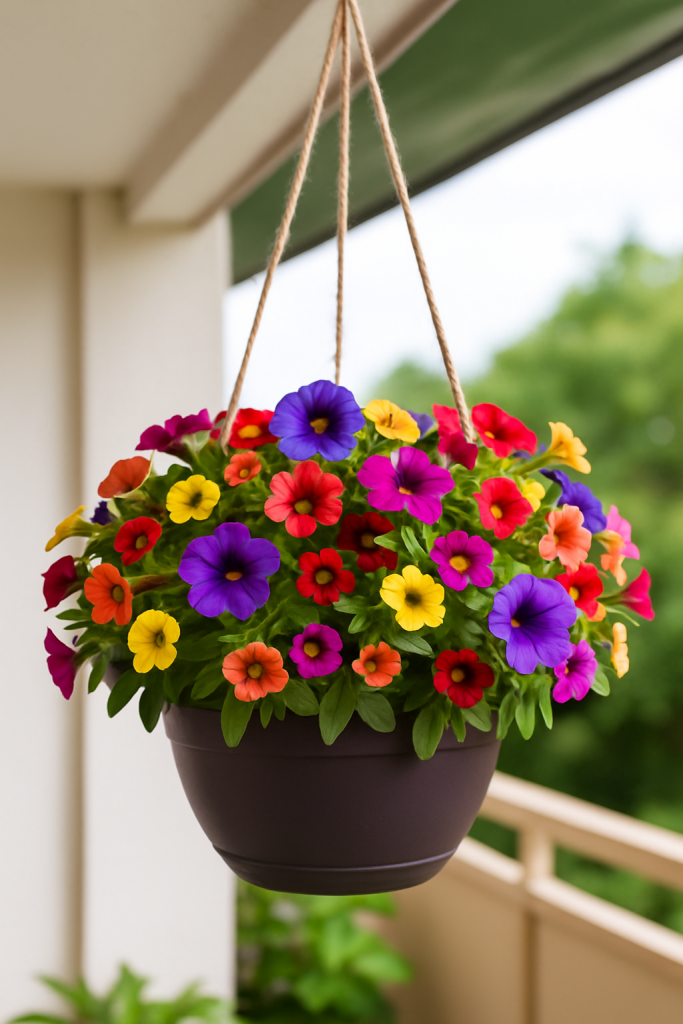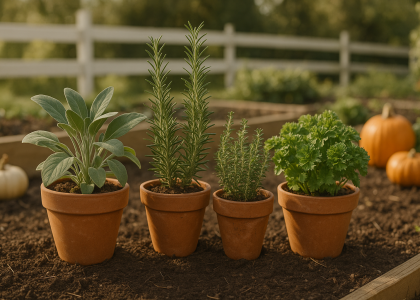If you’ve ever wandered through a garden center and felt enchanted by cascades of colorful blooms spilling from hanging baskets, chances are you’ve encountered Million Bells (Calibrachoa) and Petunias. At first glance, they may seem like twins—but beneath their vibrant petals lie subtle differences that can affect how they perform in your garden, patio, or balcony.
Whether you're a seasoned gardener or just starting your green journey, this guide will help you choose the right bloomer for your space and lifestyle.
1. Appearance: Size and Style Matter
While both plants produce trumpet-shaped flowers in dazzling colors, Petunias boast larger, showier blooms—typically 2 to 4 inches across. They can make a dramatic statement in beds or large containers.
Million Bells, on the other hand, offer petite, 1-inch blooms that bloom in abundance. What they lack in size, they make up for in volume. These little flowers densely cover trailing stems, creating a waterfall effect in hanging baskets or window boxes.
Quick Tip: If you love delicate, carpet-like cascades, go with Million Bells. If you prefer big, bold floral displays, Petunias will wow you.

2. Sun, Heat & Rain Tolerance
Calibrachoa (Million Bells) are heat-loving champions. They thrive in full sun and can withstand summer heat with grace. They’re also more resistant to rain—the petals don’t get soggy or mushy, making them ideal for areas with unpredictable weather.
Petunias, although sun-loving too, are more delicate. Heavy rain can easily damage their soft petals, and extreme heat may cause them to stall or wilt unless well cared for.
For gardeners looking for low maintenance annual flowers for full sun, Million Bells are nearly unbeatable in terms of endurance and bloom consistency.
Climate-sensitive? Million Bells might save you time and heartache.
3. Maintenance: How Much Work Are They?
One of the biggest advantages of Million Bells is their low maintenance. They are self-cleaning, meaning you won’t have to deadhead spent blooms—they fall off naturally, allowing continuous flowering.
Petunias typically require regular deadheading to keep blooming vigorously. Without it, they tend to get leggy or sparse.
Short on time or prefer an easygoing garden? Million Bells win hands down.
4. Growth Habit: Bushy or Trailing?
Both plants are excellent spillers in containers, but their habits differ:
- Petunias can grow upright or spread out, depending on the variety. Some even need pinching to maintain shape.
- Million Bells are naturally compact and trailing, ideal for hanging baskets, railing boxes, and balcony edges.
If you're tight on space but crave lush beauty, Million Bells are balcony gold.
5. Flower Colors and Special Effects
Both plants offer a rainbow of colors, but Million Bells varieties are known for bold patterns, bicolor combinations, and rare hues like coral, bronze, or black-cherry.
Petunias shine in more traditional colors and dramatic single blooms, perfect for making a statement in formal borders or floral displays.
Want to mix colors and play with textures? Pair them together for stunning contrast.
6. Pollinator Appeal & Allergy-Friendly Options
Both plants attract bees and butterflies, making them pollinator-friendly. However, some Calibrachoa cultivars are bred to be low-pollen, which makes them a great choice for gardeners with allergies.
If you're building a butterfly haven or need hypoallergenic options, Calibrachoa gives you the best of both worlds.
So, Which One Should You Choose?
| Your Garden Style | Best Choice |
| Low-maintenance & trailing | Million Bells |
| Big blooms & formal beds | Petunias |
| Rain-prone climate | Million Bells |
| Color drama & variety | Both – try a mix! |
| DIY flower beds | Petunias |
| Small-space balcony | Million Bells |
Save this chart and pin it to your garden planning board!
Final Thoughts: Why Not Grow Both?
Imagine sipping morning coffee on your balcony while cascades of Million Bells spill over your railing, visited by butterflies and bees. Or picture the bold elegance of Petunias lining your front porch, greeting guests with color and charm.
Whichever you choose, you’re not just growing flowers—you’re planting joy.

Download Your Free Planting Guide
Want a printable version of this guide?
Download our free PDF to help you choose the perfect flower for your garden.
Sign up at Greenmuse.io to get more planting guides every week.
Related Posts You Might Like:
- How to Create the Perfect Hanging Basket with Trailing Flowers
- Top 10 Low Maintenance Flowers for Busy Gardeners
- Best Flowers for Balcony Gardens That Pop All Summer
- Video-【Million Bells vs Petunias: Which Survives Summer Heat Best?】
Greenmuse.io — where every bloom tells a story, and every garden begins with a dream.





